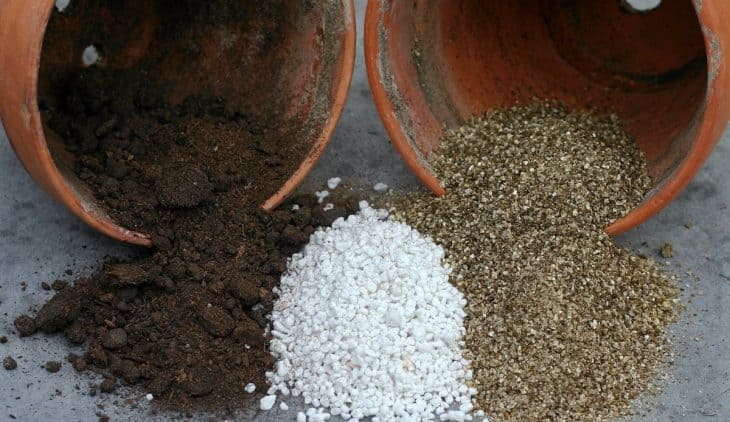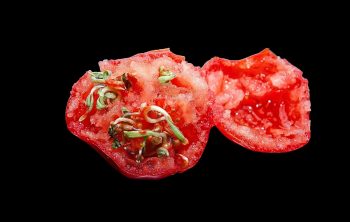Good
Based on local geography, soils mineral content varies, which in return affects its acidity or alkalinity levels in the
How To Test For Acidity
Before starting your garden, it is best to test the acidity levels in your
The best time to test the acidity levels of your

When testing your
In a large bowl, add around one cup of
If no bubbling occurs, repeat the process as you did above by making mud with one cup of
Using A pH Testing Kit
You can also test the
To use a pH testing kit, dig up
Luster Leaf 1601 Rapitest Test Kit for Soil pH, Nitrogen, Phosphorous and Potash
Shake the mixture well into it becomes well combined and then let it sit for 30 minutes. Then pour your
Then place the pH strip into the liquid you collected and leave it in their according to the package’s instructions. Once it has been in the water for as long as it needed to be, compare the color of the strip to the chart of the package.
It is a good idea to repeat the process with samples from different parts of your garden. This will help you get a good idea of the average pH levels of the
Why Acidity Levels Matter
Many plants thrive in acidic
The pH levels in

How To Make Soil More Acidic
Fortunately, if your
One of the easiest and most effective ways for how to increase
In addition, you can also use compost tea to increase acidity. Simply add one to two cups of your compost to one to two gallons of water. Allow it to sit for 48 hours, stirring regularly, then strain the compost and spray the liquid in your
You can also use organic mulch, coffee grounds, and peat moss to help increase the acidity levels in your
FAQs
What increases the acidity in the soil?
There are several factors that can affect soil acidity, for example:
The amount of nitrogen in the soil. The higher the nitrogen content, the more acidic the soil will be. The type of soil. Soil with clay in it tends to be more acidic than soil with sand in it. Soil with a high calcium carbonate content (found in chalk) tends to be less acidic than soil with a lower calcium carbonate content.
You will increase the acidity of soil if you use any type of chemical fertiliser. This has nothing to do with what kind of chemical it is or how much it contains, but rather whether you have used a nitrogen, phosphorus and potassium containing chemical or not.
How is acidity measured?
Soil pH is measured on a scale from 0 to 14, where 2.0 is neutral, and below 3.0 is acidic and above 4.0 is alkaline.
The most common way to test your soil for pH is with a soil testing kit, or with an inexpensive test kit that you can buy at the grocery store or hardware store. To determine if your soil is acidic or alkaline, you can do this with the following procedure:
1. Fill a bucket with water, and mix in 2 teaspoons of salt per gallon of water.
2. Stir the soil thoroughly with your hands, and then add it to the water.
3. Allow the mixture to sit for 5 minutes, and then test the pH with a pH meter.
4. Record the pH of your soil on a pH chart, and then calculate the percentage of acidity
If the soil is more acidic than 5 percent, add 1 tablespoon of lime per quart of soil to increase the pH.
If the soil is more acidic than 15 percent, add 1 teaspoon of sulfur per quart of soil to increase the pH.
What should I do when my soil has too much acidity?
You should add some neutralizing agent to the soil. One way to do this is to add lime. Lime is an alkaline compound, so it will neutralize the acidity of your soil.
How do I fertilize acidic soil?
The best way to fertilize acidic soils is to use a compost tea that has been produced from compost. The compost will have a high pH and therefore the compost tea will also be high in pH. This means that it will be good at neutralizing acidity.
What is the most widely used way of making soil more acidic?
There are a number of ways you can acidify your soil.
Two of the most common: Lime and Wood Ashes. These are often recommended as “natural” methods for acidifying soils, but they should be used as little as possible as they are highly toxic.
Lime is an inorganic source of calcium carbonate. The lime reacts with water and releases carbon dioxide gas (CO2).
The benefits of adding lime are that it increases soil pH, improves drainage, and improves soil structure. It also helps to increase organic matter and nutrient content. The disadvantages are that it can cause high levels of soil salinity, and can be detrimental to some plant species (especially those that like a slightly alkaline soil). It should be noted that lime is not a fertilizer, but rather an acidifying agent.
Improving Your Soil : Making Soil More Acidic
Knowing how to make
Before planting your garden, it is a good idea to test the pH levels of your
Compost is a great way to improve the acidity of your
Do you have any questions regarding making

Anna is an avid gardener who loves the outdoors and spending time in nature. She has been gardening since she was a child and has a passion for growing her own food and flowers. She enjoys experimenting with different types of plants and techniques to create beautiful and bountiful gardens. She is always trying to learn more about gardening and is an active member of her local gardening club. She loves to share her knowledge and experience with others and is always willing to lend a helping hand. Anna believes that gardening is a great way to bring people together and foster a sense of community.





